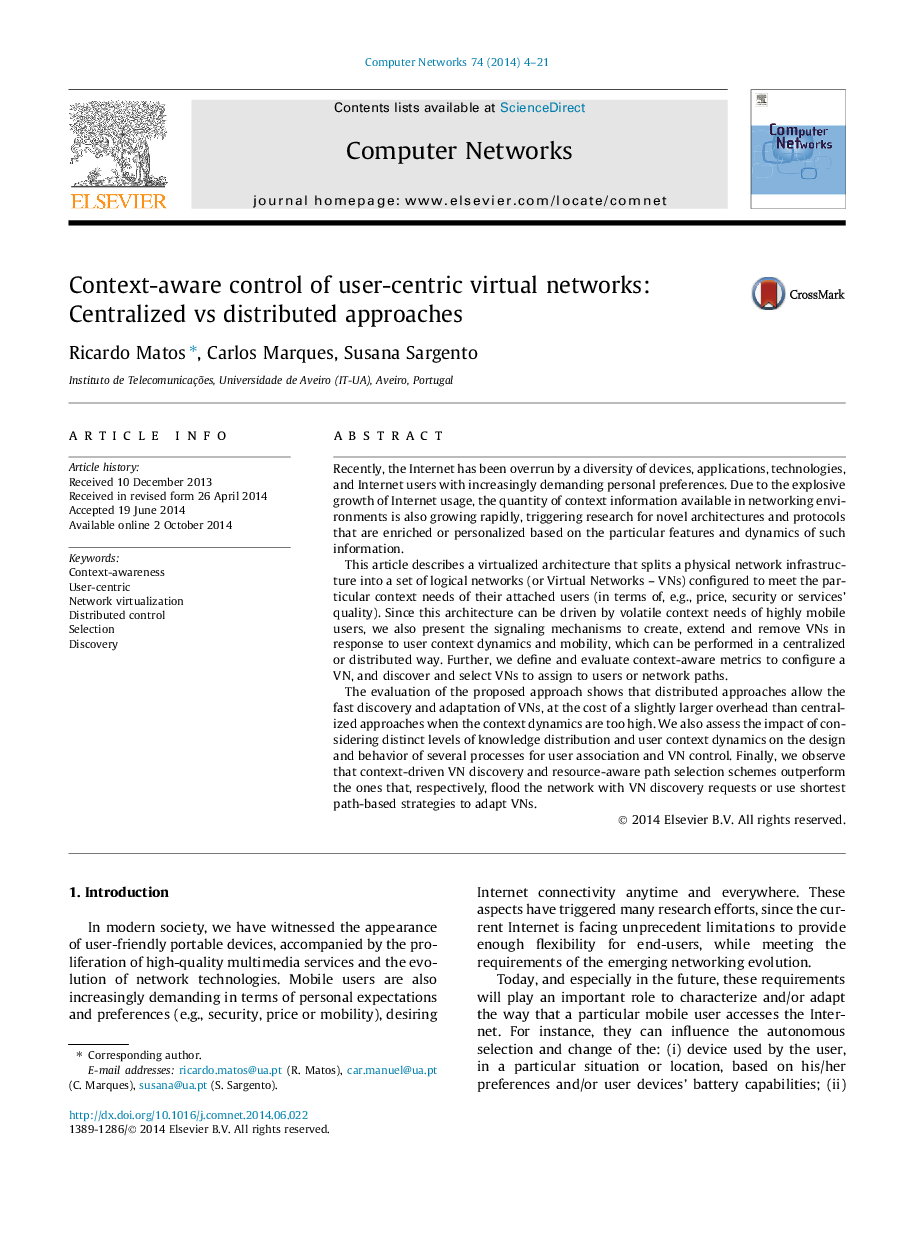| Article ID | Journal | Published Year | Pages | File Type |
|---|---|---|---|---|
| 451830 | Computer Networks | 2014 | 18 Pages |
Recently, the Internet has been overrun by a diversity of devices, applications, technologies, and Internet users with increasingly demanding personal preferences. Due to the explosive growth of Internet usage, the quantity of context information available in networking environments is also growing rapidly, triggering research for novel architectures and protocols that are enriched or personalized based on the particular features and dynamics of such information.This article describes a virtualized architecture that splits a physical network infrastructure into a set of logical networks (or Virtual Networks – VNs) configured to meet the particular context needs of their attached users (in terms of, e.g., price, security or services’ quality). Since this architecture can be driven by volatile context needs of highly mobile users, we also present the signaling mechanisms to create, extend and remove VNs in response to user context dynamics and mobility, which can be performed in a centralized or distributed way. Further, we define and evaluate context-aware metrics to configure a VN, and discover and select VNs to assign to users or network paths.The evaluation of the proposed approach shows that distributed approaches allow the fast discovery and adaptation of VNs, at the cost of a slightly larger overhead than centralized approaches when the context dynamics are too high. We also assess the impact of considering distinct levels of knowledge distribution and user context dynamics on the design and behavior of several processes for user association and VN control. Finally, we observe that context-driven VN discovery and resource-aware path selection schemes outperform the ones that, respectively, flood the network with VN discovery requests or use shortest path-based strategies to adapt VNs.
